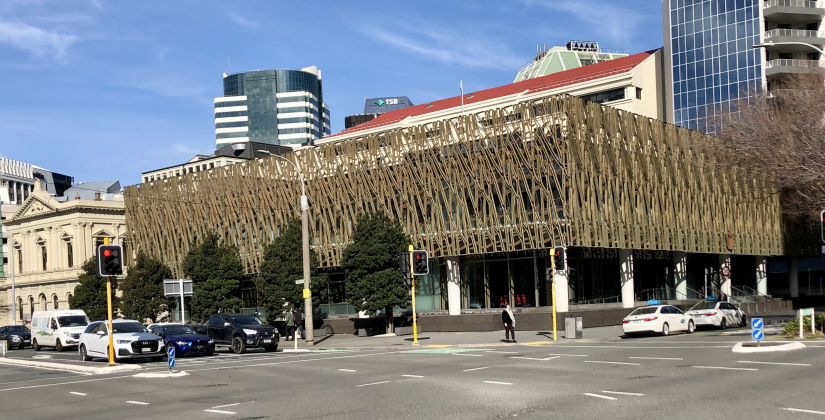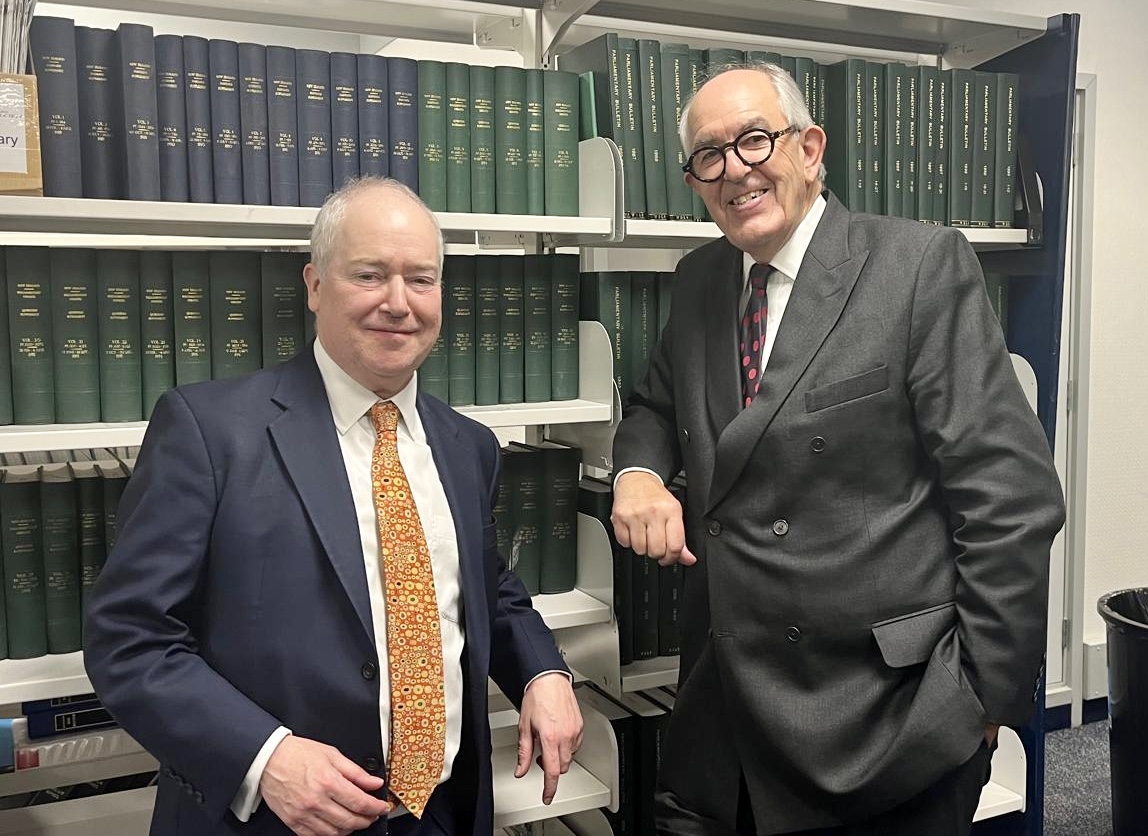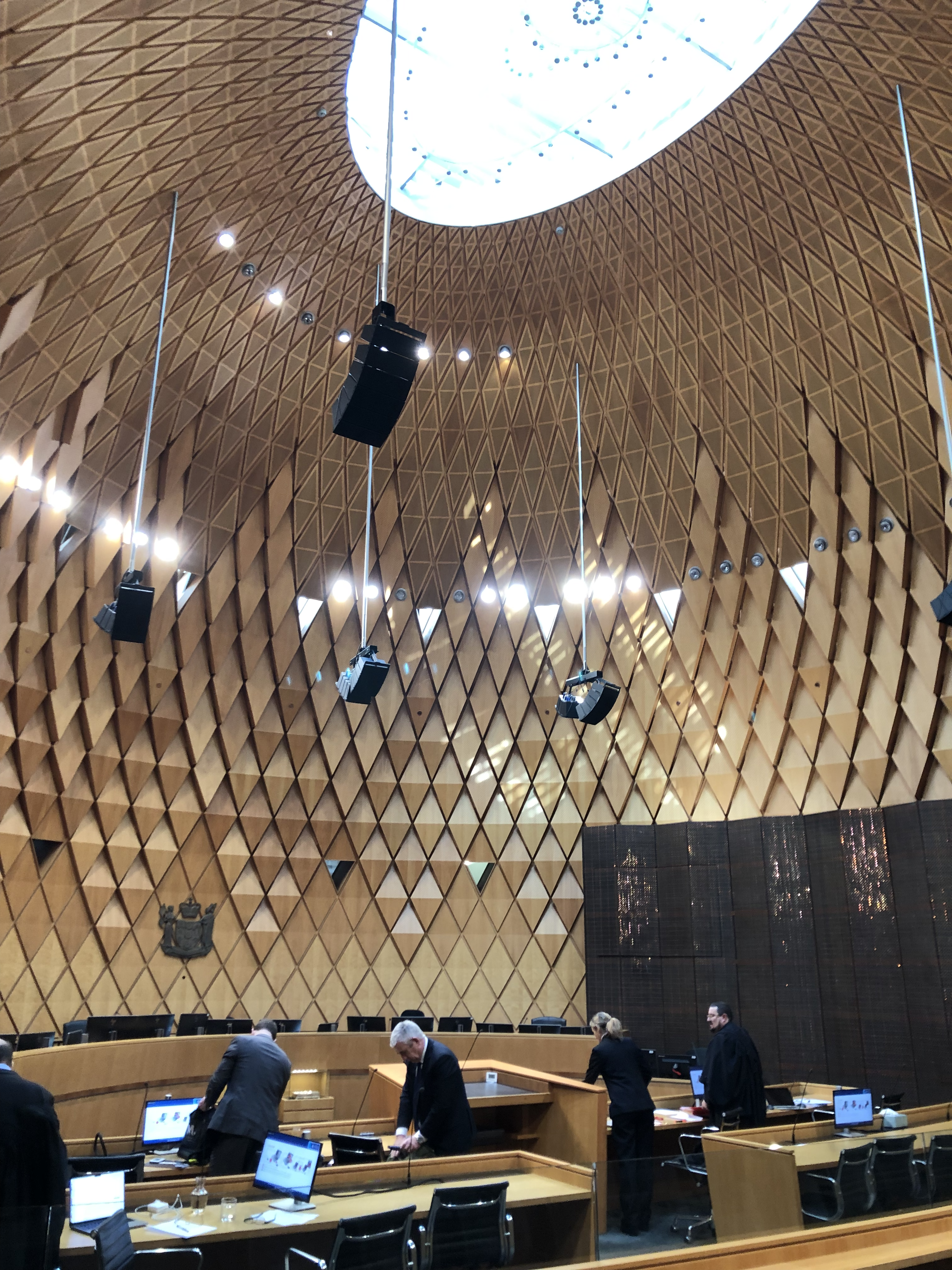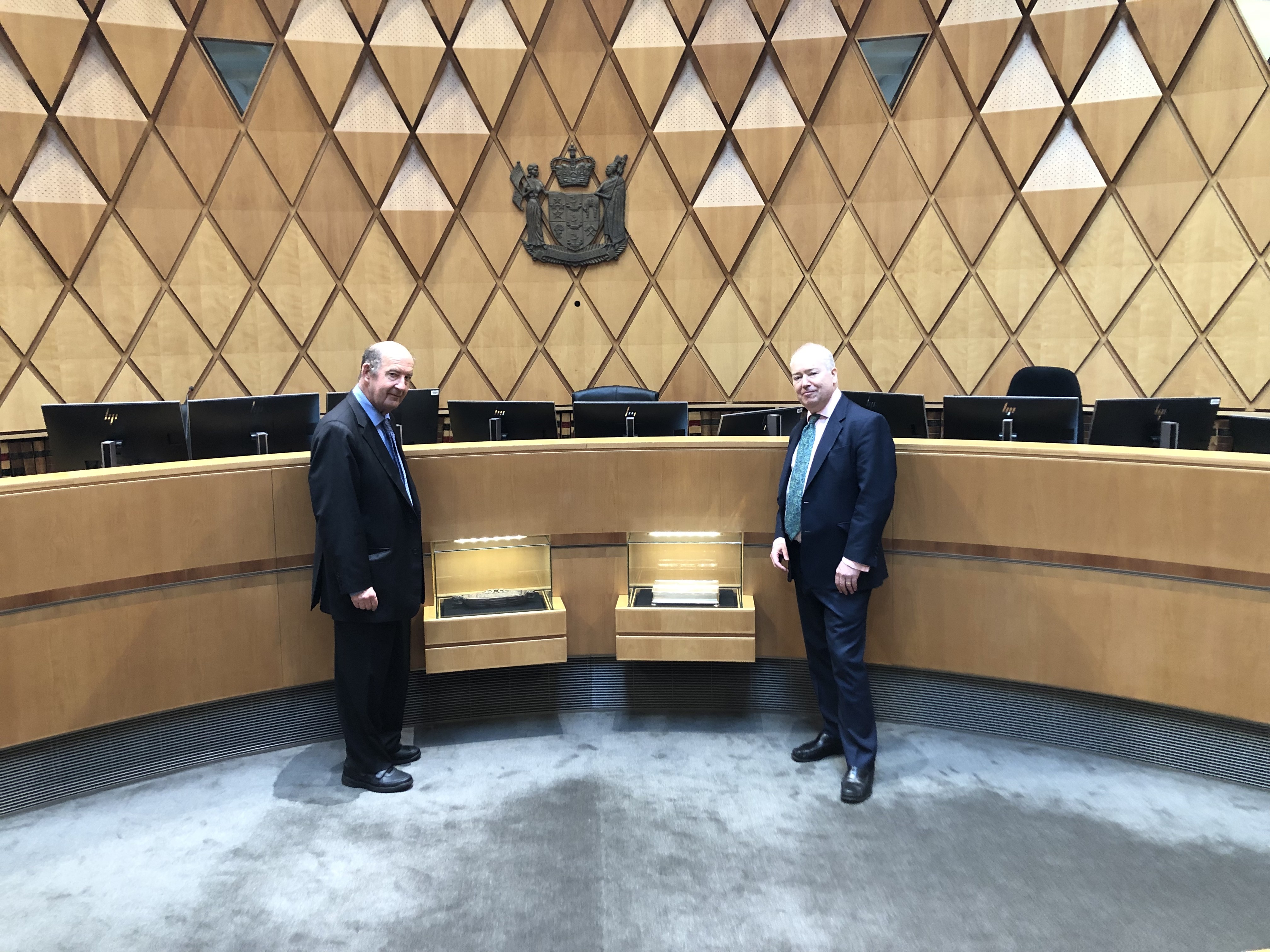ICLR in Wellington, NZ
Team ICLR’s current tour of the antipodes continues with a visit to New Zealand

After attending a conference in Adelaide, South Australia, ICLR has continued its antipodean tour with a visit to New Zealand, staying first in Auckland and then Wellington.
In Auckland we co-hosted with the New Zealand Law Librarians Association an evening of drinks and networking at the fabulous offices of Minter Ellison Rudd Watts overlooking the harbour. NZLLA president Erin Cairney introduced the three of us from ICLR (myself and my colleagues Paul Hastings and David Cosway). I then gave a short speech about the continued value of law reporting in our respective common law jurisdictions and recent developments in our products.
In Wellington we co-hosted with NZLLA an event in the library at the New Zealand Law Society, warmly welcomed by Nadine Fathers and Julie Matthews. We were delighted also to meet Judi Eathorne-Gould of NZLII – New Zealand Legal Information Institute – as well as many interesting practitioners and librarians.

The high point of the evening was a great speech by His Honour Justice Stephen Kós, of the Supreme Court of New Zealand (above, right), with a responding talk from me, discussing the past, present and future of law reporting, the importance of selective citation against the “tsunami” of unreported judgments (nevertheless valuable for transparency and research) and the risks and rewards of AI in the legal information sphere. We hope to publish the full text on this blog in due course.
The following day, while my colleagues Paul Hastings and David Cosway visited a number of different law firms and offices, I made a visit to the Supreme Court of New Zealand. I was able to spend some time watching a case, in which Justice Kós was sitting, and to meet Bernard Robertson, former editor of New Zealand Law Reports (to which I contributed as a reporter in the Privy Council back in the day). After lunch in a pub called The Backbencher, famous for its effigies of larger-than-life politicians and sports folk, I returned to the court for a tour of the library with its research and services manager, Amelia De Lorenzo.

It was fascinating to learn about the architecture and design of the building, inspired by New Zealand’s natural heritage (the ovoid shape of the courtroom suggested by the kauri tree cone), its seismic protection technology, and its priority on transparency (featuring the extensive use of glass – you can even see the judges at the bench from outside the court building). There seemed to be lots of public seating in the court, and good acoustics and sightlines, except that the judges are partially obscured by their bank of computer monitors. (Fully transparent monitors might be a step too far, though.)

Between Bernard and me you can also see a carved waka huia (treasure box) on loan from Te Papa and a silver inkwell from 1702 once owned by Queen Anne and gifted by the Privy Council in 2004, when the Supreme Court was founded.
Main picture: exterior of the Supreme Court, with a metal frieze inspired by the forests of New Zealand.